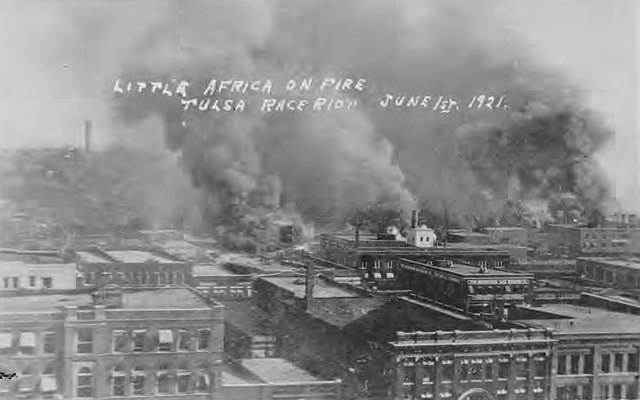Mass racial violence in the United States
In the broader context of racism in the United States, mass racial violence in the United States consists of ethnic conflicts and race riots, along with such events as:Racially based communal conflicts between White Americans and African Americans which took place before the American Civil War, often in relation to attempted slave revolts, and racially based communal conflicts between White Americans and African Americans which took place after the war, in relation to tensions which existed during the Reconstruction and later efforts to suppress Black suffrage and institute Jim Crow laws
Conflicts between Protestants and Catholic immigrants from Ireland and Germany in the 19th century
White American mobs frequently targeted Chinese and other Asian American immigrants during the 19th and 20th century
Attacks on American Indians and American settlers which took place during conflicts over land ownership
Frequent fighting among members of various ethnic groups in major cities, specifically in the Northeastern United States and the Midwestern United States throughout the late 19th and early 20th centuries, such as the ethnic violence between Puerto Ricans and Italian Americans in New York City
Anti-immigrant violence, specifically anti-Catholic violence which targeted Catholics in the 19th century
Anti-immigrant violence, specifically Hispanophobic violence which targeted Latin Americans during the 20th century
Two concurrent but distinct patterns of disturbances which occurred during the civil rights era: racial disturbances which occurred during demonstrations and protests, such as the disturbance which occurred at the Marquette Park Illinois march of August 1966 and the violence which occurred during the 1969 Greensboro uprising in North Carolina, in conjunction with the ghetto riots (1964–1969), a group of riots which includes the long, hot summer of 1967 and the King assassination riots of 1968, which caused mass violence, looting, and long-lasting damage within African American communities.

A white gang looking for Black people during the Chicago race riot of 1919
Buildings burning during the Tulsa race massacre of 1921
A political cartoon about the East St. Louis massacres of 1917; the caption reads, "Mr. President, why not make America safe for democracy?"
Buildings burning during Watts riot
Racism in the United States
Racism has been reflected in discriminatory laws, practices, and actions against "racial" or ethnic groups throughout the history of the United States. Since the early colonial era, White Americans have generally enjoyed legally or socially sanctioned privileges and rights which have been denied to members of various ethnic or minority groups at various times. European Americans have enjoyed advantages in matters of education, immigration, voting rights, citizenship, land acquisition, and criminal procedure.
Scars on an enslaved man, Peter, April 2, 1863, Baton Rouge, Louisiana
A group of white men pose for a 1919 photograph as they stand over the body of the Black lynching victim Will Brown before they decide to mutilate and burn them during the Omaha race riot of 1919 in Omaha, Nebraska. Photographs and postcards of lynchings were popular souvenirs in the U.S.
White tenants seeking to prevent Blacks from moving into the housing project erected this sign. Detroit, 1942.
Due to threats and violence against her, U.S. Marshals escorted 6-year-old Ruby Bridges to and from the previously whites only William Frantz Elementary School in New Orleans, 1960. As soon as Bridges entered the school, white parents pulled their children out.








